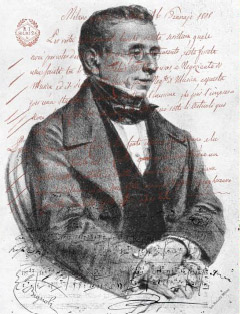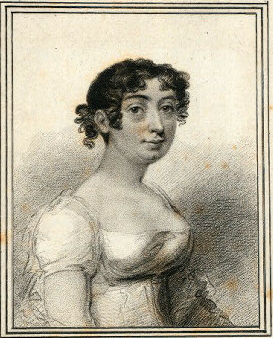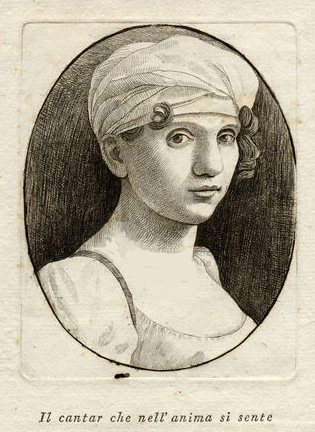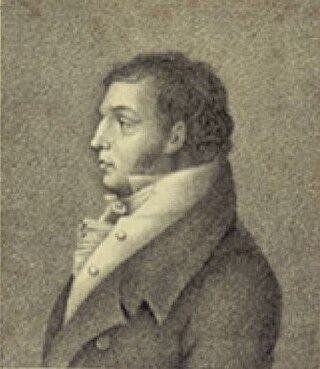Related Research Articles

Gioachino Antonio Rossini was an Italian composer who gained fame for his 39 operas, although he also wrote many songs, some chamber music and piano pieces and some sacred music. He set new standards for both comic and serious opera before retiring from large-scale composition while still in his thirties, at the height of his popularity.

Giacomo Meyerbeer was a German opera composer, "the most frequently performed opera composer during the nineteenth century, linking Mozart and Wagner". With his 1831 opera Robert le diable and its successors, he gave the genre of grand opera 'decisive character'. Meyerbeer's grand opera style was achieved by his merging of German orchestra style with Italian vocal tradition. These were employed in the context of sensational and melodramatic libretti created by Eugène Scribe and were enhanced by the up-to-date theatre technology of the Paris Opéra. They set a standard that helped to maintain Paris as the opera capital of the nineteenth century.

Giuseppe Felice Romani was an Italian poet and scholar of literature and mythology who wrote many librettos for the opera composers Donizetti and Bellini. Romani was considered the finest Italian librettist between Metastasio and Boito.

Casa Ricordi is a publisher of primarily classical music and opera. Its classical repertoire represents one of the important sources in the world through its publishing of the work of the major 19th-century Italian composers such as Gioachino Rossini, Gaetano Donizetti, Vincenzo Bellini, Giuseppe Verdi, and, later in the century, Giacomo Puccini, composers with whom one or another of the Ricordi family came into close contact.

Margherita d'Anjou is an opera semiseria in two acts by Giacomo Meyerbeer. The Italian libretto was by Felice Romani after a text based on legends around the English Wars of the Roses by René-Charles Guilbert de Pixérécourt. The title role is the Queen Margaret of Shakespeare's Henry VI plays, who also appears in Richard III. Margherita d'Anjou is the first opera by Meyerbeer to mix historical events and personages with fictional characters and situations, as his French grand operas Les Huguenots, Le prophète and L'Africaine were later to do. It is the fourth of Meyerbeer's Italian operas and was his first international success.

L'esule di Granata is a melodramma serio in two acts by Giacomo Meyerbeer. The Italian libretto was by Felice Romani based on the rivalries between the Zegridi and the Abenceraggi factions in the last days of the kingdom of Granada. It is the fifth of Meyerbeer's Italian operas but had only three confirmed stagings in the 19th century. The world premiere took place at La Scala, Milan, on 12 March, 1822.

La zingara is an opera semiseria in two acts by Gaetano Donizetti, set to a libretto by Andrea Leone Tottola after La petite bohémienne by Louis-Charles Caigniez, which was itself derived from a work of August von Kotzebue.
Bruce Ford is an American operatic tenor, particularly associated with Mozart roles and the bel canto repertory.

Teresa Bertinotti was an Italian soprano and voice teacher. She created leading roles in several operas, including Simon Mayr's Ginevra di Scozia.
Marietta Sacchi was an Italian operatic soprano who had an active career during the 1820s and 1830s.

Giuseppe Siboni was an Italian operatic tenor, opera director, choir conductor, and voice teacher. He began his career in his native country in 1797 and actively performed in major Italian opera houses up through 1818. From 1806 to 1809, he performed successfully in London, and from 1810 to 1814, he was active in Vienna, where he enjoyed the friendship of Ludwig van Beethoven. He played a critical role in Danish musical life from 1819 until his death in 1839. In 1819, he joined the Royal Danish Theatre in Copenhagen, where he worked first as a singer and later as director of the opera chorus and head director. In 1827 he founded the Royal Conservatory of Music in Copenhagen. He was married three times during his life, including his second marriage to the sister of poet Franz von Schober. His third marriage produced a son, the composer and pianist Erik Siboni (1828–1892).

Elisabetta Manfredini-Guarmani was an Italian opera singer best known for having created the leading soprano roles in four of Rossini's operas, roles which he wrote specifically for her voice. She was born Antonia Elisabetta Manfredini in Bologna and was the daughter of the composer and music theorist Vincenzo Manfredini. After her stage debut in 1810 when she sang in the premiere of Stefano Pavesi's Il trionfo di Gedeone at Bologna's Teatro del Corso, she went on to perform at La Fenice, La Scala, Teatro Regio di Torino, Rome's Teatro Argentina and several other opera houses, primarily in Northern Italy. In addition to the roles she created in Rossini's operas, she also sang in the world premieres of operas by several composers who are lesser known today, including Pietro Raimondi, Simon Mayr, and Ferdinando Paër. Her last known appearance was in 1828 after which there is no further trace of her. The date and place of her death are unknown.

Chiara e Serafina, o I pirati is an opera semiseria in two acts by Gaetano Donizetti to a libretto by Felice Romani, based on the melodrama La cisterne by René Charles Guilbert de Pixérécourt. Donizetti's first opera for La Scala, it was premiered on October 26, 1822, but was not a success. Donizetti was not given the opportunity to compose again for La Scala until writing Ugo, conte di Parigi nearly a decade later.

Emma di Resburgo is a melodramma eroico in two acts by Giacomo Meyerbeer. It was the composer's sixth opera and the third that he wrote for an Italian theatre. The libretto in Italian by Gaetano Rossi is set in Scotland and has the same storyline as previous operas by Étienne Méhul (Héléna, Paris, 1803, to a French text) and Simon Mayr. Meyerbeer's opera had its premiere at the Teatro San Benedetto in Venice on 26 June 1819.
Claudio Bonoldi was an Italian tenor.

Eliodoro Bianchi was an Italian operatic tenor and later a prominent singing teacher. Born in Cividate al Piano and trained in Naples under Giacomo Tritto, he made his stage debut in 1793. Amongst the many roles, he created during the course of his 40-year career were Baldassare in Ciro in Babilonia and the King of Sweden in Eduardo e Cristina, both of which were composed by Rossini expressly for Bianchi's voice. He retired from the stage in 1835 and spent his later years in Palazzolo sull'Oglio, where he died at the age of 75.
Pio Botticelli was an Italian bass-baritone active in the opera houses of Italy from 1810 until the mid-1840s. Amongst the numerous roles he created in world premieres were Pietro il Grande in Donizetti's Il falegname di Livonia and The Caliph in Pacini's La schiava in Bagdad. He also sang the role of Leucippo in the Austrian premiere of Rossini's Zelmira.
Savino Monelli was an Italian tenor prominent in the opera houses of Italy from 1806 until 1830. Amongst the numerous roles he created in world premieres were Giannetto in Rossini's La gazza ladra, Enrico in Donizetti's L'ajo nell'imbarazzo and Nadir in Pacini's La schiava in Bagdad. He was born in Fermo where he initially studied music. After leaving the stage, he retired to Fermo and died there five years later at the age of 52.
Le due duchesse or La caccia dei lupi is a semiseria opera in two acts by Johann Simon Mayr to a libretto by Felice Romani which was premiered 7 November 1814 at La Scala in Milan and revived in 1819 at the Teatro San Carlo, Naples. Romani used his libretto again with a few changes for a new setting by Filippo Celli (1782–1856) for Florence on 8 September 1824.
Le due duchesse, ossia La caccia dei lupi is an 1814 opera in 2 acts, a dramma semiserio per musica, by Johann Simon Mayr to a libretto by Felice Romani after Edgar ou La chasse aux loups by Louis-Charles Caigniez premiered 7 November 1814 Milan, Teatro alla Scala. The plot is based on a French melodrama set in Saxon England during the reign of King Edgar the Peaceful.
References
- ↑ The Meyerbeer Libretti: Italian operas 2 - Page xii 2009 · Snippet view "Mayr set this plot as Elena as recently as 1814 as an opera - semiseria , re - adapted for La Scala in the autumn of 1816 where Meyerbeer may well have heard it .
- ↑ Lorraine Byrne Bodley Goethe and Zelter: Musical Dialogues 2017 p 238 "In Act Two of Elena, an opera by old Mayr of Bergamo,251 there is said to be a very effective sextet; it is said to be based on a popular Bohemian melody...